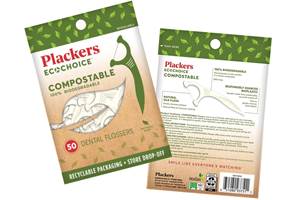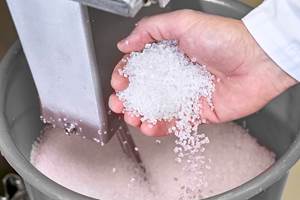Growth Rate of Bioplastics Higher than Overall Plastics Market Growth
nova-Institute reports that the for the first time, the growth rate of biobased polymers exceeds that of the overall plastics market growth.
A new market and trend report from German-based researcher nova-Institute characterizes the year 2020 as very promising for biobased polymers. Sold-out PLA in 2019 led to the installation of increased capacities, PE and PP made from biobased naphtha are breaking ground, and future expansion for biobased polyamides/nylons as well as for PBAT, PHAs and casein polymers is on the horizon. A lower production was only observed for biobased PET.
“Bio-based Building Blocks and Polymers – Global Capacities, Production and Trends 2020–2025” from the international nova biopolymer expert group shows capacities and production data for all biobased polymers in the year 2020 and a forecast for 2025.
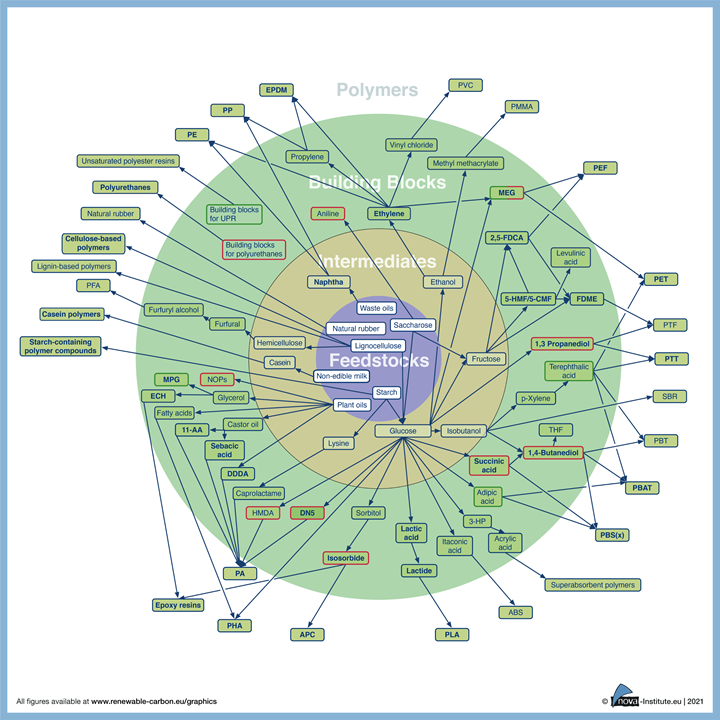
Several global brands are already expanding their feedstock portfolio to include, next to fossil-based, sources of renewable carbon, CO2, recycling and especially biomass, increasing the demand for biobased as well as biodegradable polymers. Nevertheless, at the same time, there is a lack of support from politics, which still only promotes biofuels and bioenergy.
In 2020, the total production volume of biobased polymers was 4.2 million tonnes, which is 1 % of the total production volume of fossil-based polymers. For the first time in many years, the CAGR of 8% is significantly higher than the 3-4% of the overall growth of polymers, and this is expected to continue until 2025.
Overall, the global land requirement for bio-based polymers is only 0.006 % of the global agricultural land. The major biomass feedstock used for bio-based polymer production is glycerol as a biogenic by-product (37 %).
In the annually updated market report for the year 2020, a total of 17 biobased building blocks and 17 polymers are described, in addition to comprehensive information on the capacity development from 2020 to 2025 and production data for 2020 per bio-based polymer. Furthermore, the issue includes analyses of market developments and producers per building block and polymer, so that readers can quickly gain a comprehensive overview of current developments that goes far beyond capacity and production figures. As an additional bonus the report provides a detailed, comprehensive expert view on biobased naphtha. Finally, the deep insight into manufacturing companies introduced in 2018 has been comprehensively updated and now shows 174 detailed company profiles – from startups to multinational corporations.
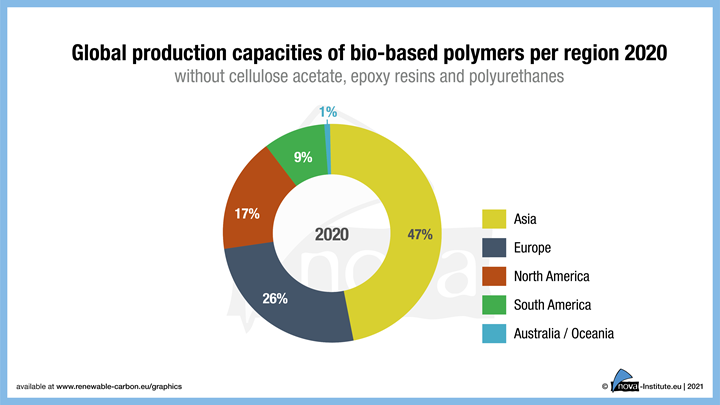
It is interesting to note that the increase in production capacity from 2019 to 2020 is mainly based on the expansion of PLA and PBAT production in Asia and the worldwide epoxy resin production. Also, increased and new production capacities for polybutylene succinate and copolymers (PBS(X)) and biobased PE and polyurethanes were reported in 2020. Especially polyamides/nylons and PP will continue to grow significantly (about 36 %) until 2025. While capacities for PHA will grow in Asia and North America, casein polymers in Europe will increase by 32 % until 2025, followed by increases in PE in South America and Europe, PLA mainly in Europe and PBAT in Asia with about 8%.
The data published annually by European Bioplastics () are taken from the market report written by biopolymer expert group of the nova-Institute, but with a smaller selection of biobased polymers. The corresponding authors are from Asia, Europe and North America.
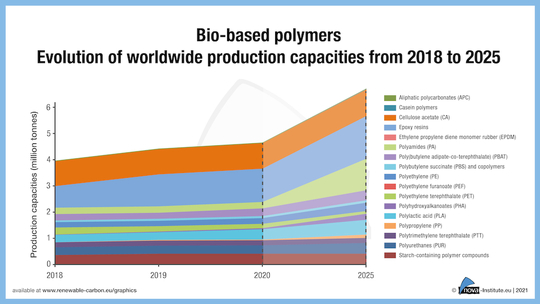
Related Content
Polymer Science for Those Who Work With Plastics: Why Entanglements — Not Just Molecular Weight — Drive Plastic Performance
Ever try running your fingers through tangled hair? Yeah … that’s not fun, but that’s what happens at the molecular level when polymer chains reach the right length. They wrap around each other, intertwine and … get stuck — and those tangles are the real reason plastics perform the way they do.
Read MoreHow to Optimize Injection Molding of PHA and PHA/PLA Blends
Here are processing guidelines aimed at both getting the PHA resin into the process without degrading it, and reducing residence time at melt temperatures.
Read MorePrices Up for All Volume Resins
First quarter was ending up with upward pricing, primarily due to higher feedstock costs and not supply/demand fundamentals.
Read MorePolymer Science for Those Who Work With Plastic — Part 1: The Repeat Unit
What are the basic building blocks of plastics and how do they affect the processing of that material and its potential applications in the real world? Meet the repeat unit.
Read MoreRead Next
For PLASTICS' CEO Seaholm, NPE to Shine Light on Sustainability Successes
With advocacy, communication and sustainability as three main pillars, Seaholm leads a trade association to NPE that ‘is more active today than we have ever been.’
Read MorePeople 4.0 – How to Get Buy-In from Your Staff for Industry 4.0 Systems
Implementing a production monitoring system as the foundation of a ‘smart factory’ is about integrating people with new technology as much as it is about integrating machines and computers. Here are tips from a company that has gone through the process.
Read MoreSee Recyclers Close the Loop on Trade Show Production Scrap at NPE2024
A collaboration between show organizer PLASTICS, recycler CPR and size reduction experts WEIMA and Conair recovered and recycled all production scrap at NPE2024.
Read More








